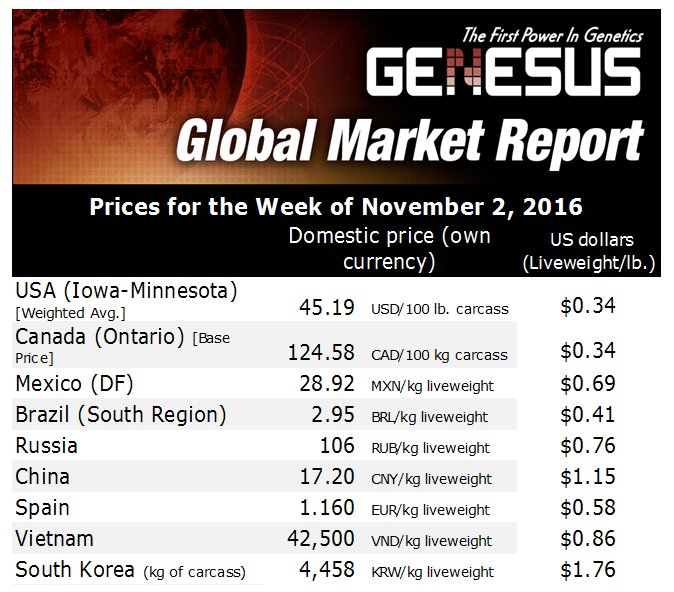



Russia Hog Market Report
RUSSIA - The current pig price in Russia is 102 Roubles ($1.61) per kg live. This means good producers are making in the region of $50 for a 120kg pig, writes Simon Grey, General Manager Russia, CIS, and Europe.There were predictions of over supply this autumn, with very low prices that were expected to be below the cost of production for all but the very best producers. Several outbreaks of African Swine Fever in large farms in the past few weeks has led to over 100,000 pigs being destroyed and burnt.
Maybe this has been enough to reduce numbers of pigs going to market. Certainly, the current ‘conspiracy theory’ that are so loved in Russia is that African Swine Fever is being used to control the pig price.
We know historically that the aftermath of any major disease outbreak is higher market prices on the back of lower production. However, failing to contain ASF has potential catastrophic effects on the Russian pig industry, which is looking for further growth and the development of export markets.
With a lot being done to develop pig production in the far east of Russia, primarily to supply China and Asia, it will be interesting to see if the movements of pigs from western to eastern Russia are banned. The Ural Mountains form an excellent physical barrier for any natural movement of the disease. With proper management, there is no reason for the virus to move east.
One interesting figure is the price for cull sows. This is currently 91 Roubles ($1.44) per kg, only 10 per cent less than for a market pig. Russia, like many Eastern European countries, has a great tradition of making all sorts of dried and smoked sausage, for which sow meat can be used.
For a 120kg market pig, total sales price is 12,244 Roubles ($196.27), and for a 200kg cull sow, 18,2000 Roubles ($263.16). The vast majority of Russian companies produce their own F1 replacement gilts. Even with a gilt royalty that will average around $30, a cull sow is worth more than a replacement gilt.
Russian producers make a profit when they replace a sow with a home-produced gilt! Like producers globally, there is still a net cost of buying an F1.
This is a big bonus for Russian producers. It means there is no reason ever to not have enough gilts. This is important for many reasons.
- Having enough gilts on the farm means that you should never miss breeding targets. Number of sows / gilts bred weekly is the number one target for all pig producers. It has the biggest influence on number of pigs sold (if you breed nothing, you get nothing).
- When I analyse production figures, the most effective pig farms in terms of pigs per crate and kg per m2 have replacement rates of around 55 per cent to 56 per cent. This is a function of never missing breeding target and always having barns full of pigs.
- For maximum sow productivity, it is important to maximize the number of parity 3 and 4 sows in the herd. The only way to do this is by entering enough gilts every week.
- Getting genetic progress means replacing existing sows and boars. Keeping the same animals means it is impossible to get genetic progress. For most farmers, replacement gilts are a net cost to the business. The decision to take is one of genetic progress Vs cost of replacements. If you are making profit each time you replace a sow with a gilt then the only issue becomes one of genetic progress.
- Currently, there is a very good case to replace any sow that misbehaves immediately. Once again, for most producers, the cost of a sow that returns must be balanced with the net cost of replacing her. If you actually make a profit replacing her, then the issue becomes only one of maximizing output from a farm.
Maximising output from a farm means having every single sow space full with a productive sow or gilt (except required for emptying and washing farrowing).










